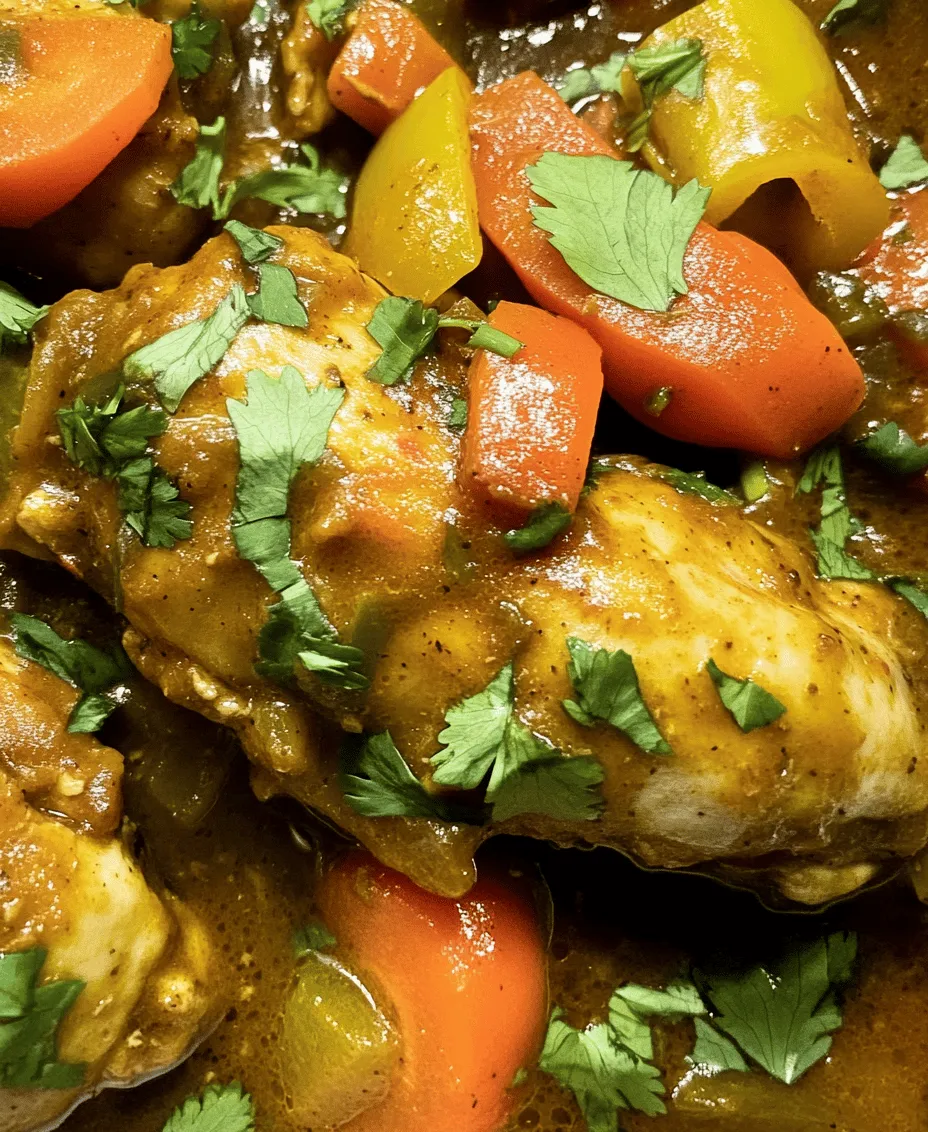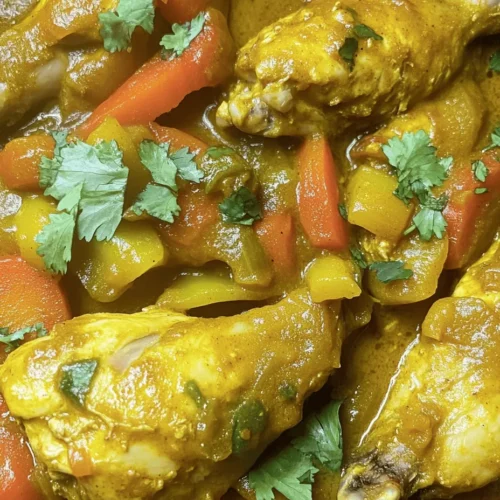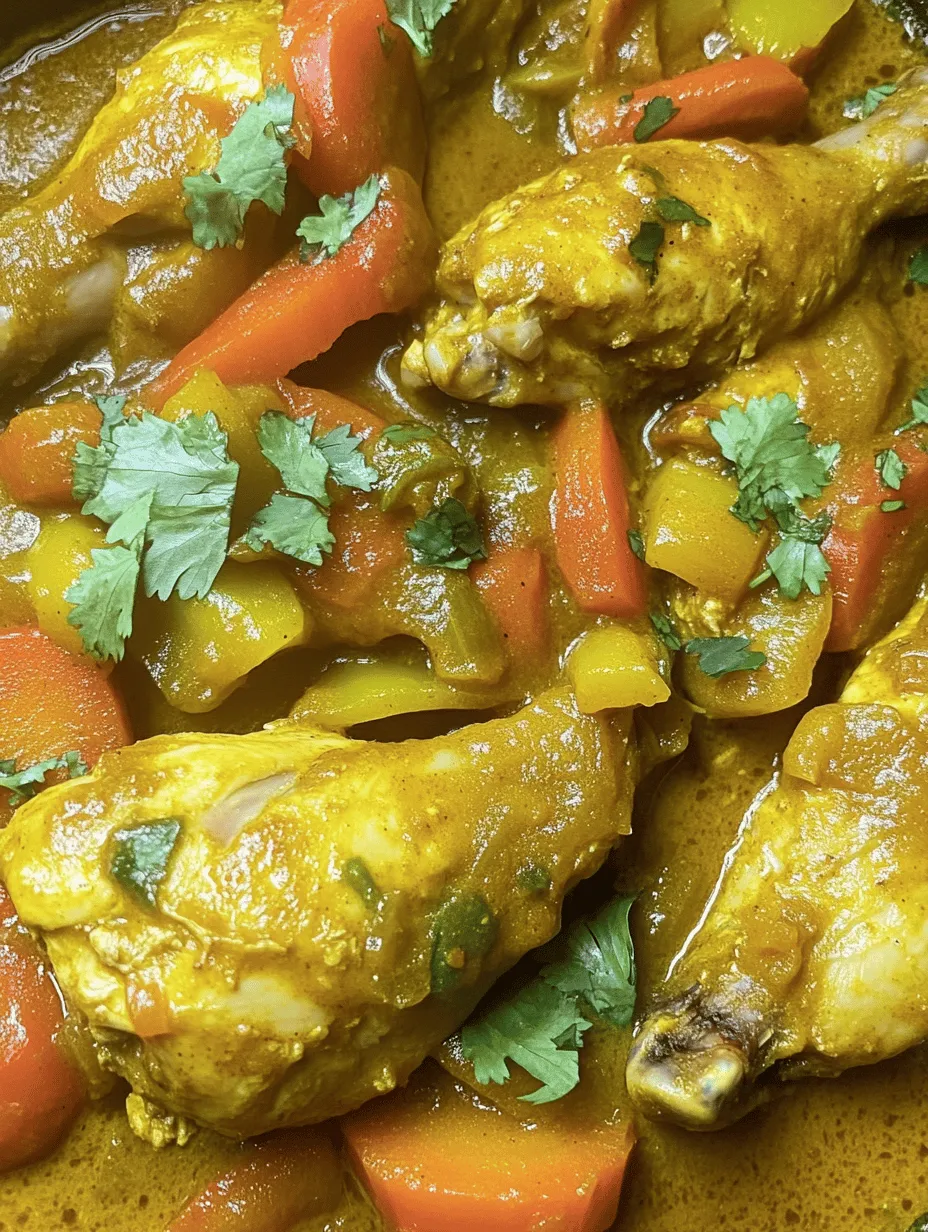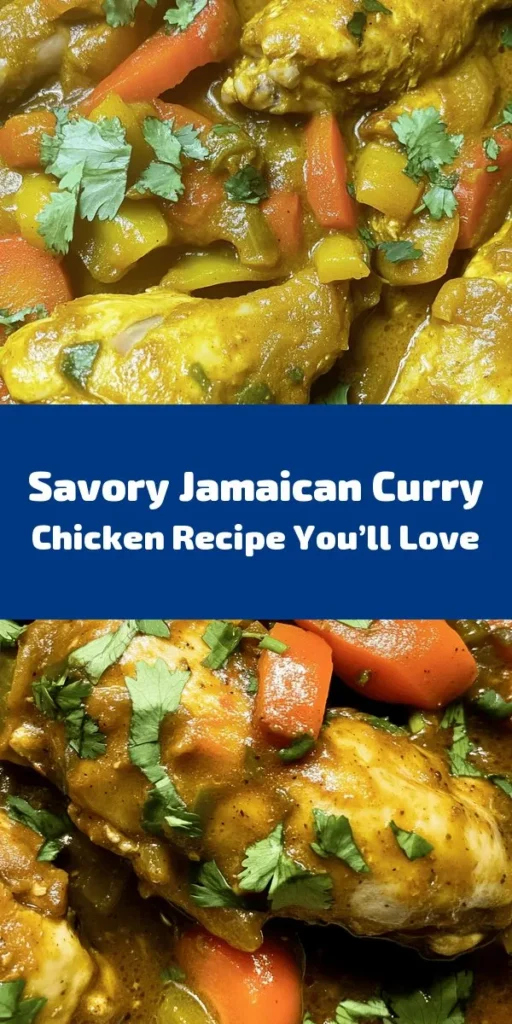Introduction
Jamaican cuisine is an exquisite tapestry of flavors, colors, and aromas that reflects the island’s rich cultural heritage. Infused with influences from African, Indian, Chinese, and European culinary traditions, Jamaican dishes are celebrated for their bold, spicy profiles and vibrant ingredients. Among the many iconic recipes that represent this culinary diversity, authentic Jamaican curry chicken stands out as a beloved favorite. This dish is not just a meal; it’s a celebration of the island’s culinary history and a staple found in homes and restaurants alike.
At the heart of Jamaican curry chicken is the harmonious blend of spices and fresh ingredients that come together to create an unforgettable flavor experience. The dish is characterized by its rich, aromatic sauce, tender chicken, and a variety of vegetables, making it both satisfying and nutritious. When prepared with care using quality ingredients, the result is a dish that transports your taste buds straight to the Caribbean, offering a culinary escape that is both comforting and exciting.
To achieve the best results in making authentic Jamaican curry chicken, it is essential to prioritize fresh, high-quality ingredients. This not only enhances the flavor of the dish but also pays homage to the traditional cooking methods that have been passed down through generations. Whether you are preparing this dish for a family dinner or a festive occasion, understanding its origins and the ingredients that define it will enrich your cooking experience.
Understanding Jamaican Curry Chicken
The origins of curry chicken in Jamaica can be traced back to the island’s history of trade and migration. The introduction of curry powder to Jamaican cuisine is largely attributed to Indian indentured laborers who arrived in the 19th century. They brought with them their culinary traditions, including the use of spices such as turmeric, cumin, and coriander, which eventually blended with local ingredients and cooking techniques to create a uniquely Jamaican version of curry.
Curry chicken is not just a dish; it holds cultural significance for many Jamaicans. It is often served during special occasions, family gatherings, and community celebrations, symbolizing warmth and hospitality. The dish reflects Jamaica’s culinary landscape, showcasing the island’s ability to adapt and innovate while honoring its diverse influences.
The key to authentic Jamaican curry chicken lies in its distinctive spices and ingredients. One of the most important components is Jamaican curry powder, which differs from its Indian counterpart. Jamaican curry powder typically has a more robust flavor profile, often featuring a blend of spices such as turmeric, coriander, and fenugreek, along with unique local spices like allspice (pimento). This combination creates a rich, aromatic base that sets the stage for the dish.
Allspice is another essential ingredient in Jamaican cooking. Known locally as pimento, this spice adds a warm, slightly sweet flavor that enhances the overall taste of the curry. Its unique profile makes it a staple in various Jamaican dishes, from jerk seasoning to stews, and it plays a crucial role in balancing the heat and spice of the curry.
Speaking of heat, scotch bonnet peppers are the star ingredient when it comes to adding a fiery kick to Jamaican curry chicken. These peppers are renowned for their intense heat and fruity flavor, making them a favorite among spice lovers. However, heat management is key in this recipe; you can adjust the number of peppers used according to your heat tolerance while still preserving the dish’s authentic flavor.
The versatility of Jamaican curry chicken cannot be overstated. It can be served with rice and peas, roti, or even as a filling for wraps. This adaptability reflects the essence of Jamaican flavors and allows for creativity in the kitchen. Whether you prefer a milder version or a fiery hot curry, this dish can be tailored to suit your palate while still maintaining its authentic roots.
Essential Ingredients for Authentic Jamaican Curry Chicken
When preparing authentic Jamaican curry chicken, it’s crucial to gather the right ingredients. Each component contributes to the overall flavor and texture of the dish, ensuring a delicious and satisfying meal.
Chicken
The primary ingredient in this recipe is chicken, and for the best flavor, it is recommended to use bone-in pieces, such as thighs or drumsticks. Bone-in chicken not only enhances the dish’s taste but also provides a rich, savory broth as it cooks. The meat becomes tender and succulent, absorbing the spices and flavors from the marinade and sauce. While boneless chicken can be used for convenience, the depth of flavor achieved with bone-in pieces is unparalleled.
Jamaican Curry Powder
A key player in achieving the authentic taste of Jamaican curry chicken is Jamaican curry powder. Unlike typical curry powders found in Indian cuisine, Jamaican curry powder has a distinct blend of spices that often includes turmeric, coriander, and fenugreek, along with the all-important allspice. When selecting curry powder, opt for a reputable brand that captures the essence of Jamaican flavors. Home cooks can also experiment with creating their own blend by toasting and grinding whole spices, which can elevate the dish even further.
Allspice
Allspice, or pimento, is a defining ingredient in Jamaican cooking. Its warm, aromatic flavor profile adds depth to the curry and complements the heat of the peppers. Found in both whole berry and ground forms, allspice should be used generously in the curry to bring out its signature taste. It is often referred to as “Jamaican pepper” and can be found in most grocery stores or specialty spice shops.
Scotch Bonnet Peppers
No authentic Jamaican curry chicken would be complete without the addition of scotch bonnet peppers. These peppers are known for their intense heat, often rated between 100,000 to 350,000 Scoville units, making them one of the hottest peppers in the world. Alongside their heat, they also impart a unique fruity flavor that enhances the dish. When using scotch bonnet peppers, it’s essential to handle them with caution; wearing gloves can prevent any irritation from the oils. To moderate the heat, you can remove the seeds and ribs from the peppers or use a smaller amount according to your preference.
Additional Ingredients
Beyond the core ingredients, several additional components contribute to the flavor and texture of authentic Jamaican curry chicken. Coconut milk is frequently added to create a creamy, rich sauce that balances the heat of the spices and peppers. Not only does it enhance the dish’s flavor, but it also provides a comforting, velvety texture.
Vegetables such as onions, garlic, ginger, bell peppers, and carrots are often included in the curry, adding layers of flavor and nutrition. Onions and garlic are sautéed at the beginning of the cooking process, releasing their natural sweetness and aromatic qualities, while bell peppers and carrots add color and crunch.
In summary, the combination of high-quality chicken, unique spices, and fresh vegetables creates a harmonious blend of flavors that makes authentic Jamaican curry chicken a cherished dish. As we move forward in this culinary journey, we will explore the preparation steps that will guide you in crafting this delicious meal.
Preparation Steps for the Perfect Curry Chicken
Creating authentic Jamaican curry chicken involves several key preparation steps that enhance the flavors and ensure a mouthwatering result. Each step is integral to building the dish’s depth and character.
Marination
The first step in preparing curry chicken is marination, which is essential for infusing the meat with flavor. Marinating chicken allows the spices and aromatics to penetrate the meat, resulting in a more flavorful and tender dish. To marinate the chicken, combine Jamaican curry powder, allspice, scotch bonnet peppers, garlic, ginger, and a splash of vinegar or lime juice in a bowl. Coat the chicken pieces thoroughly with the marinade and let them sit for at least 30 minutes, or preferably, overnight in the refrigerator. The longer the chicken marinates, the more intense the flavors will become.
Cooking Techniques
Once the chicken is well-marinated, it’s time to move on to the cooking process. Proper cooking techniques are crucial for developing the dish’s rich flavors.
Browning the Chicken
The first cooking step involves browning the marinated chicken pieces in a hot skillet or Dutch oven with a little oil. This step is vital for flavor development, as it creates a beautifully caramelized exterior on the chicken. Browning adds depth to the dish and enhances the overall taste of the curry. Cook the chicken in batches if necessary, ensuring not to overcrowd the pan, which could lead to steaming rather than browning. Once browned, remove the chicken from the pan and set it aside.
Sautéing Vegetables
Next, it’s time to sauté the aromatic vegetables. In the same pan used for browning the chicken, add chopped onions, garlic, ginger, and bell peppers. Sauté these ingredients until they become soft and fragrant, about 5-7 minutes. This step is crucial as it releases the natural sweetness of the vegetables and builds the base for the curry sauce.
Combining Ingredients
After the vegetables are sautéed, it’s time to combine everything. Return the browned chicken to the pan, adding any remaining marinade to the mix. Pour in coconut milk and chicken broth to create a rich, flavorful sauce. The coconut milk not only adds creaminess but also helps to mellow the heat from the scotch bonnet peppers. Stir everything together, ensuring that the chicken is well coated with the sauce.
Allow the mixture to simmer gently, letting the flavors meld together and the chicken cook through. This process usually takes about 30-40 minutes, depending on the size of the chicken pieces. As the chicken cooks, the sauce will thicken, and the vibrant flavors will develop, resulting in a mouthwatering dish ready to be served.
In this first part of our journey to creating authentic Jamaican curry chicken, we’ve explored the rich background of Jamaican cuisine, the essential ingredients that make this dish unique, and the vital preparation steps that set the stage for a truly flavorful meal. Stay tuned for the next part, where we will delve into serving suggestions and tips for achieving the perfect curry chicken every time.

Cooking Method: Step-by-Step Breakdown
Marinating the Chicken
To achieve the best flavor in your authentic Jamaican Curry Chicken, marinating the chicken is a crucial step. Start by cutting your chicken into bite-sized pieces to ensure that the marinade penetrates well. For maximum flavor, marinate the chicken for at least 2 hours, but ideally, you should let it sit overnight in the refrigerator. This allows the spices to infuse deeply into the meat.
When marinating, use a mixture of curry powder, thyme, garlic, ginger, and a splash of lime juice. Lime not only adds flavor but also helps tenderize the chicken. For a more intense flavor, consider adding a small amount of allspice or Scotch bonnet pepper for that signature kick. Ensure each piece is well-coated in the marinade, and cover the bowl with plastic wrap or transfer it to a resealable bag for convenience.
Heating Oil and Temperature Control
Once your chicken is marinated, it’s time to heat the oil. Choose a heavy-bottomed pot or Dutch oven and add about 2-3 tablespoons of vegetable oil over medium-high heat. The oil needs to be hot but not smoking; a good test is to drop in a small bit of the marinade. If it sizzles, you’re ready to go.
Temperature control is vital in this step. If the oil is too hot, it can burn the spices, leading to a bitter taste. If it’s not hot enough, the chicken will stew rather than brown. This initial browning is key to developing a rich flavor profile for your curry.
Browning the Chicken
Carefully add the marinated chicken to the hot oil in a single layer, ensuring not to overcrowd the pot. Browning the chicken will create a savory crust and enhance the overall texture of the dish. Allow the chicken to cook undisturbed for about 5-7 minutes on one side before flipping. The goal is to achieve a golden-brown color, which not only improves the aesthetics but also adds depth to the flavor.
Once browned, remove the chicken from the pot and set it aside. This step is essential as it allows the chicken to maintain its moisture and ensures a tender bite when finished.
Sautéing Vegetables
With your chicken set aside, it’s time to sauté the vegetables, which typically include onion, bell peppers, and garlic. In the same pot, add a little more oil if necessary, then toss in the chopped onions first. Sauté them for about 3-4 minutes until they become translucent. Next, add the bell peppers and minced garlic, stirring for another 2 minutes.
Timing is crucial here; you want the vegetables to soften but not lose their vibrant colors and crunch. This step builds the foundation of your curry’s flavor, so be sure to scrape up any brown bits from the bottom of the pot as you stir, incorporating that rich flavor into your dish.
The Simmering Process
After the vegetables are sautéed, return the browned chicken to the pot. Pour in the remaining marinade and enough chicken broth or water to cover the chicken. Stir well to combine all ingredients. Bring the mixture to a simmer, then reduce the heat to low.
Cover the pot and let it cook for about 30-40 minutes, stirring occasionally. This slow simmering process is what makes the chicken tender and allows the flavors to meld beautifully. Check the chicken for doneness—when it easily pulls apart with a fork, it’s ready. For an even richer sauce, you can remove the lid for the last 10 minutes of cooking to allow some of the liquid to evaporate and thicken.
Serving Suggestions and Pairings
Traditional Accompaniments for Curry Chicken in Jamaica
Authentic Jamaican Curry Chicken is traditionally served with rice and peas, which is a staple in Jamaican cuisine. This dish consists of rice cooked with kidney beans (or pigeon peas), coconut milk, thyme, and scallions, providing a creamy and flavorful base that complements the rich curry.
To prepare rice and peas, rinse 1 cup of long-grain rice and soak it in water for about 30 minutes. In a pot, combine 1 can of coconut milk, 1 cup of water, 1 can of drained kidney beans, 2 sprigs of thyme, and chopped scallions. Bring to a boil, then add the rice, reduce the heat, and cover. Cook until the rice is tender and has absorbed the liquid, about 20-25 minutes.
Boiled Dumplings
Another traditional side is boiled dumplings, which are simple yet satisfying. To make them, mix 2 cups of flour with a pinch of salt. Gradually add water until you form a soft dough. Divide the dough into small balls and flatten them slightly. Boil in salted water for about 10-15 minutes until they float to the surface.
Creative Side Dish Ideas
For those looking to elevate the meal experience, consider adding a refreshing side salad made from local vegetables like cucumbers, tomatoes, and lettuce dressed in a light vinaigrette. Additionally, fried plantains can add a sweet contrast to the spicy curry, offering a delightful balance.
Flavor Variations and Customizations
Adjusting Spice Levels
One of the beauties of Jamaican Curry Chicken is its versatility regarding spice levels. If you prefer a milder dish, reduce the amount of curry powder and omit the Scotch bonnet pepper. Alternatively, if you crave heat, increase the amount of Scotch bonnet or add a dash of cayenne pepper for extra kick.
Alternative Ingredients
For those with dietary restrictions, consider substituting chicken with tofu or jackfruit for a vegetarian version. Both options absorb flavors well and can create a satisfying dish. If you are avoiding gluten, ensure that your curry powder does not contain any additives and double-check any other packaged ingredients.
Exploring Regional Variations
Curry chicken varies across the Caribbean, with each island adding its unique twist. For example, in Trinidad, curry chicken might include chickpeas, while in Guyana, the use of green seasoning adds a fresh herbal note. Exploring these variations can inspire you to create your version of this beloved dish.
Cultural Significance and Storytelling
Curry chicken holds a special place in Jamaican gatherings and celebrations. It is often served at family reunions, birthday parties, and festive holidays, symbolizing unity and togetherness. Many Jamaican families have their cherished recipes passed down through generations, each with its unique flair and personal anecdotes.
Growing up, many Jamaicans recall the aroma of curry wafting through the kitchen as family members gathered to share stories and laughter around the dinner table. It is more than just a meal; it is a cultural experience that fosters connections and reminiscing about the past.
Conclusion
Authentic Jamaican Curry Chicken is a celebration of rich flavors, cultural heritage, and community spirit. Its unique blend of spices and ingredients captures the essence of Jamaican cuisine while offering endless opportunities for personalization. As you prepare this comforting dish, take the time to appreciate its roots and the stories that accompany it.
Whether you’re enjoying it with traditional rice and peas or experimenting with your own creative side dishes, this curry chicken recipe invites you to explore the vibrant culinary world of Jamaica. So gather your ingredients, embrace the cooking process, and enjoy a meal that not only satisfies the palate but also honors the rich tapestry of Jamaican culture.



